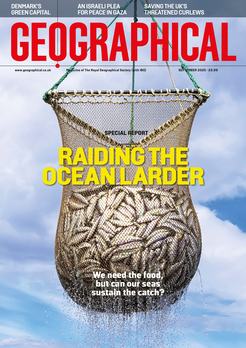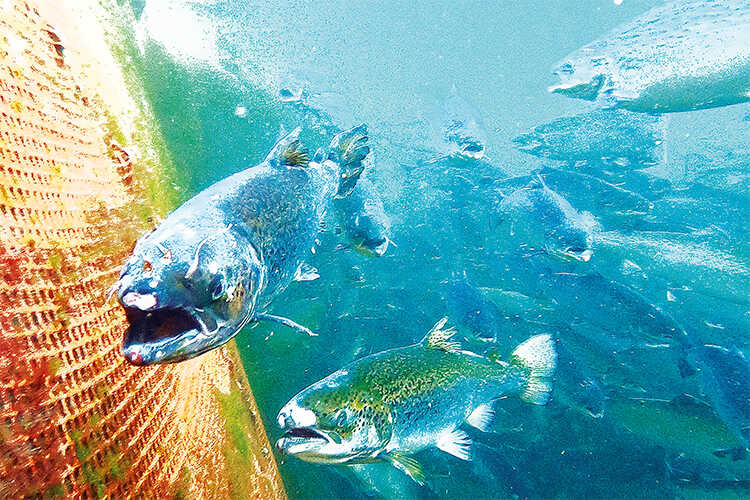
There are more than 200 salmon farms in Scotland, with sales of more than £1.2 billion a year. However, disease is killing 15 million farmed salmon a year, and the industry is doing untold damage to other marine life with wild salmon numbers plummeting
Report by Mark Rowe
The Orkney island of Papa Westray lies 42 kilometres across the North Sound from Kirkwall, the capital of the archipelago. Gaze out from the southeast coast of the island, its inhabitants affectionately call Papay, and there’s nothing to see but metal-grey sea, broken only by the dunes of the distant island of Sanday.
Soon, this vista is likely to change. Approval has been granted for a salmon farm three kilometres off East Moclett on that southeast coast. Featuring six circular cages, each 160 metres in circumference, the farm, operated by Cooke Aquaculture Scotland, will cover an area the size of five football pitches. Anyone dreamy enough to come to Papay for the wonderfully elemental views – and many do just that – will soon find a barge capable of holding 600 tonnes of fish feed plonked permanently adjacent to the farm. The farm will be the seventh of its kind in waters around Papay and the proposal, which was approved by Orkney Islands Council last year, has brought to the fore concerns about the impacts of salmon farming in the UK. These range from pollution and the welfare of the salmon to interbreeding with wild fish and visual and physical impacts on the wider natural environment.
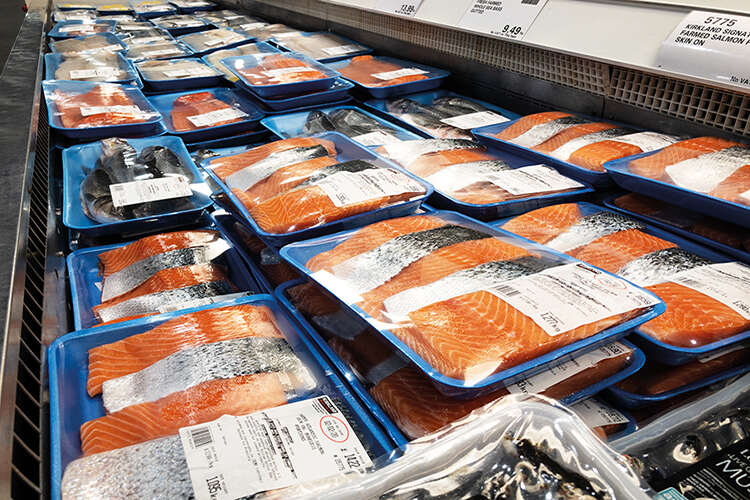
‘Papay is a special place,’ says Wendy Elves, a Papay resident who opposes the farm. ‘You feel like you are in the middle of nowhere – there is just wild sea. This is our one remaining uninterrupted seascape. When you are so far from anywhere else, you don’t expect to come up against such a fight. We need to be careful. We don’t want Papay to be known as “the island surrounded by fish farms”.’
A majority of people on Papay objected to the proposal, but Elves feels that their views were outweighed by the juggernaut that is the farmed salmon industry. ‘There are only 80–90 people on the island,’ she says. ‘We were not going to get thousands of objections. Our calls have fallen on deaf ears.’
The Scottish salmon industry is a powerful sector to challenge, and demand for the protein-rich fish would appear insatiable. The value of salmon sold has continuously increased over the past decade, rising from £786 million in 2013 to £1.21 billion in 2022. According to Salmon Scotland, in 2021, the volume of raw fresh, chilled salmon consumed in the UK increased by 7.8 per cent to 63,300 tonnes. And with 97,835 tonnes sold abroad that year, a 36 per cent increase year-on-year, farmed salmon remains the UK’s biggest food export. A further 55,000 tonnes of fresh salmon, worth £450 million, was exported in the first nine months of 2022. The industry provides 2,500 direct jobs as well as 10,000 jobs and 3,500 businesses in the supply chain and has more than 200 farms in Scottish waters, predominantly off the Outer Hebrides, Argyll and Bute, Orkney and Shetland. In Shetland, aquaculture is the largest private-sector employer and the third largest in all, after the NHS and the local authority.
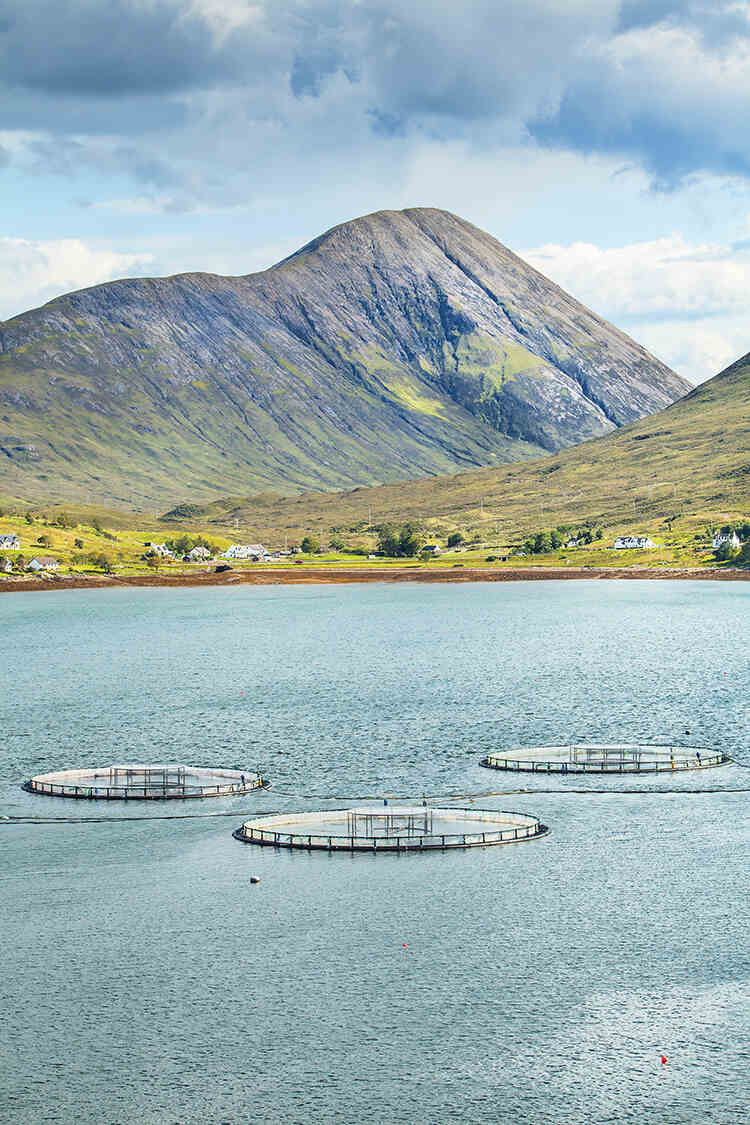
And yet, despite highly professional, polished industry PR and branding, the concerns about farmed salmon, which apply broadly to aquaculture around the world, won’t go away. ‘The benefits of job creation from the farmed salmon are completely outweighed by the environmental and welfare disbenefits,’ says Don Staniford of the Scamon Scotland campaign. The first criticism is an obvious one: a salmon is hatched to migrate thousands of kilometres across the Atlantic before returning and surging upstream through raging rivers. ‘Putting a salmon in a cage is cruelty, akin to doing the same with a golden eagle or an albatross,’ says Staniford. ‘Even if you improve the space for the fish, it is still the lesser of two evils. People still think that salmon leap up a waterfall and onto our plate. It’s a myth.’
Related to this welfare issue are startling data from the Fish Health Inspectorate, which show that nearly 15 million salmon mortalities were reported by farms in Scotland from January to November 2022, compared with 8.58 million in all of 2021 and 5.81 million in 2020. Diseases include gill pox virus, lice infestation and head and skeletal inflammation. Campaigners’ GoPro cameras have increased scrutiny by providing disturbing underwater images of diseased salmon.
In addition, campaigners raise concerns about how the industry addresses and controls disease outbreaks. Nine tonnes of antibiotics were used in UK salmon farms in 2021, a 168 per cent increase on 2017. Only pig farming used more. ‘Chemicals such as formaldehyde and hydroperoxide are used to tackle lice. Lice are crustaceans, so there is collateral damage to other crustaceans, such as lobsters,’ says Staniford.
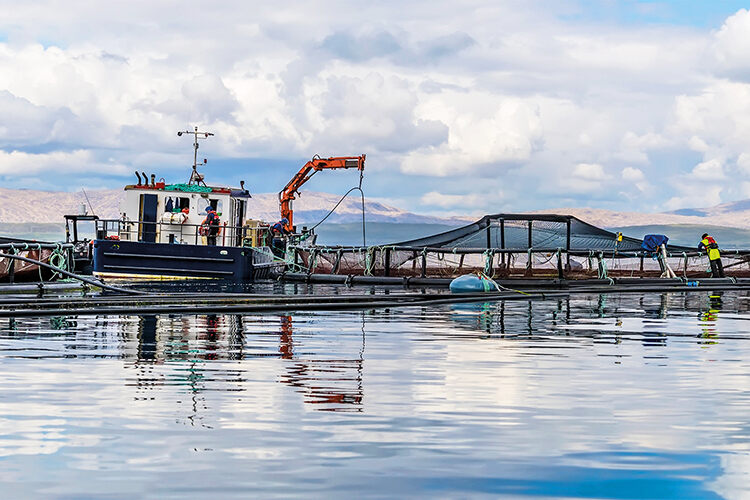
Rachel Mulrenan, Scotland director at WildFish, believes the precautionary principle should be applied to the chemicals used. ‘They can be harmful to crustaceans up to 30 kilometres away from the nets, so this is having an impact on Scotland’s creel fisher industry.’
Meanwhile, other species are affected, with reports of seals entangled in nets intended to deter predators from the ultimate free lunch. The prospects for wild Atlantic salmon also appear to be intertwined with farmed salmon. Since the 1970s, global populations of wild Atlantic salmon have declined from 8–10 million to just three million. In Scottish waters, reported rod catch of salmon in 2021, at 35,693, is the lowest since records began and consistent with a general pattern of decline in numbers of wild salmon returning to Scotland.
Nearly half of assessed wild salmon stocks (95 of 193) in Scotland are deemed to have a poor conservation status.
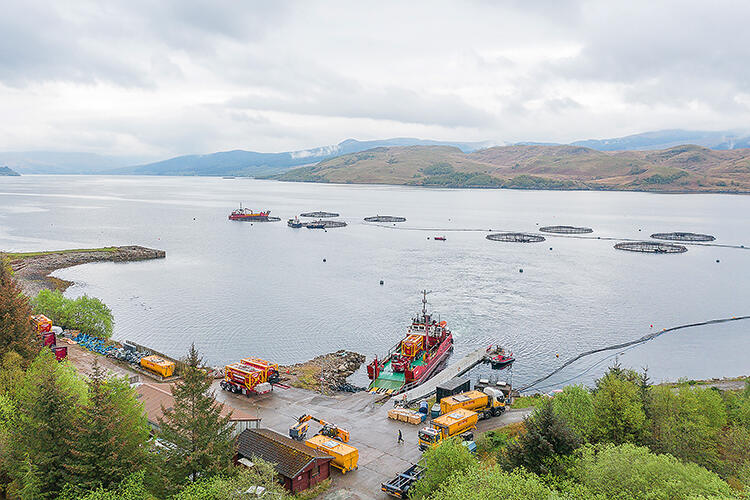
‘The key for us is issues such as sea lice proliferation,’ says Mulrenan. ‘The wild Atlantic salmon population has plummeted and the lice must be having an impact on young juvenile migrating smolts.’ WildFish also has concerns over the location of farms, which can lie along migratory routes or within marine protected areas. Mulrenan is frustrated that, despite two Scottish parliamentary reports in 2018 having recommended tighter regulation of the industry, the Scottish government has taken no action. ‘It’s a massive industry; if anything, the expansion has speeded up since 2018,’ she says. ‘They have a target of doubling production by 2030 and there is no sign the government is going to intervene. The implicit support of the government for these practices is difficult to counteract.’
This apparent inaction has frustrated the islanders of North Uist in the Outer Hebrides, where the dumping of dead farmed fish in sand dunes has been going on for almost 20 years at the Whiteshore Cockles site. The practice is illegal, although the Scottish government has issued a temporary extension order until a drying plant to process the fish is built. The stench from the site, which is set amid a stunningly beautiful landscape of big skies and charismatic wildlife, can be ineffable.
The waste produced by salmon is substantial. According to the Scottish Association for Marine Science, 200,000 tonnes of salmon will likely emit organic waste material equivalent to that of half the population of Scotland. Using these ratios, campaigners say the East Moclett site will produce the equivalent waste of 51,000 humans from its 3,850 tonnes of salmon every day (this is disputed by Cooke). The strong residual benthic current runs in a northwesterly direction, so the majority of the waste will be driven into the narrow channel between Papay and its offshore island, the Holm of Papay.
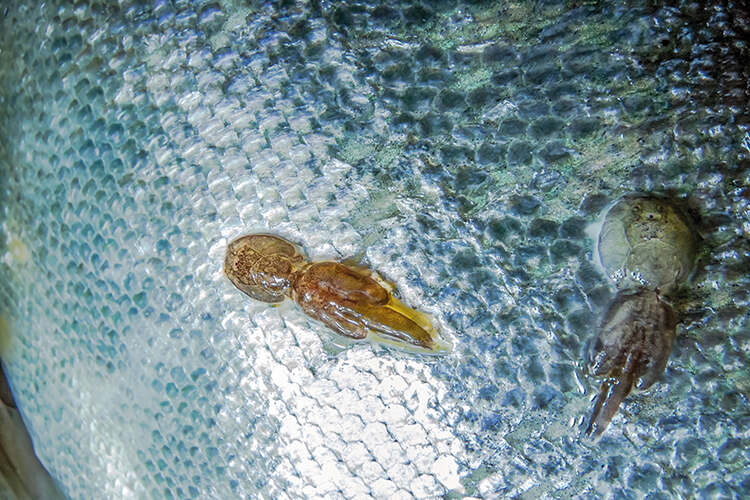
For its part, the industry mounts a robust defence. ‘Like any livestock sector, there are natural challenges that we would prefer not to happen,’ acknowledges Tavish Scott, chief executive of Salmon Scotland. ‘There is always more work to do, just as there is in any sector, but the nonsense claims of a tiny bunch of activists get whipped up.’
The industry doesn’t dispute the quantities of antibiotics used but says this was a one-off. Mowi, Scotland’s largest salmon producer, says its farms were hit by at least six salmon diseases in 2021, including gill disease, heart disease and a bacterial infection, all of which can be lethal unless treated with antibiotics. The company says it has developed an effective vaccine that markedly reduced antibiotic use in 2022.
Equally, Scott confirms the high mortality figures of farmed salmon in 2022. While he maintains that jellyfish blooms were the main cause, nine other factors were identified, including gill health and the transfer of fish from freshwater (where they are hatched) to seawater. ‘We have been proactive about it,’ he says.
Much of the data and imagery used against the industry is selective, says Scott, and he disputes the analogy with caged birds of prey. ‘It’s a false equivalence to equate a truly wild bird with salmon that is raised from egg to plate.’
The industry claims, as developers everywhere do, that it tends to be incomers who have ‘bought a view’ who oppose fish farms. They point to independent polling that put support for aquaculture at 70 per cent in Shetland. Privately, people within the industry express exasperation and feel they are more regulated than the public realises and more tightly than the trawler industry. They point to how farmed salmon are stunned before slaughter and contrast this with the deaths of pelagic whitefish from suffocation and crushing. Salmon Scotland lays great emphasis on third-party accreditation by the RSPCA and the Soil Association (critics feel much of this monitoring lacks teeth and merely nudges the industry towards meaningful high standards rather than requiring them to meet them).
Some issues might be mitigated by the use of different pens. Salmon farms generally use open containment pens. Semi-closed containment pens are deployed in Norway and feature an impermeable membrane at the base that prevents exchanges between lice, wild fish, predators and jellyfish. ‘The waste produced by the process of open-top nets is incredible,’ says Mulrenan, who believes that closed nets may offer a potential alternative. ‘But these are not a panacea – the technology is not there yet – so in the meantime, there should be a moratorium on the industry, or at least on its expansion. The industry is not sustainable, so in the long term, it makes no sense to support it. There needs to be a just transition plan for those working in the industry.’

Frustrated by Scottish government inaction, WildFish has launched Off the Table, a campaign to raise awareness of farmed fish problems within the hospitality industry and its customer base. ‘It’s an issue that many people are not aware of; they have an image of wild, healthy salmon,’ says Mulrenan. ‘It’s about raising awareness in the same way campaigners did about caged hens.’
Salmon Scotland says it always explores new technology but says current semi-open pens would have limited use in Scotland. ‘The issue is with their robustness,’ says Scott. ‘They cannot withstand constant buffeting in open seas, so would only be deployed in sheltered waters.’
Back on Papay, Elves and other islanders anecdotally report what she calls ‘a deadening of the shore’. Along the west coast, she says, the number of shellfish and diving seabirds has noticeably dropped off since a farm was installed there. ‘To say this has not had an impact on marine life is sacrilege.’
Critics of salmon farming are not luddites, she insists. ‘Farming has its place but we have to farm sustainably. It seems we are the only ones connecting the dots and looking at the accumulated effect of so many farms in one place. We have environmentally precious seagrass off our coast, which is an important natural carbon sink.’
The new farm nets will be just 500 metres away from the marine protected area but, she points out, unlike the fixed boundaries of a national park, a sea reserve ‘is a line in the sea, and the sea is moving all the time.’
‘There is no right way to do this,’ says Staniford. ‘You have too many fish in too small a space. We need to put the genie back in the bottle.’ Encouragement comes from a decision by the Loch Lomond and the Trossachs National Park to reject a proposed fish farm in Loch Long, as well as a ban on open cages in Alaska, Washington state, Oregon and California. ‘Farmed salmon is a juggernaut of an industry,’ he admits. ‘It’s not going to be stopped overnight. But it starts with community resistance, community fightback – as we see in Papa Westray.’

